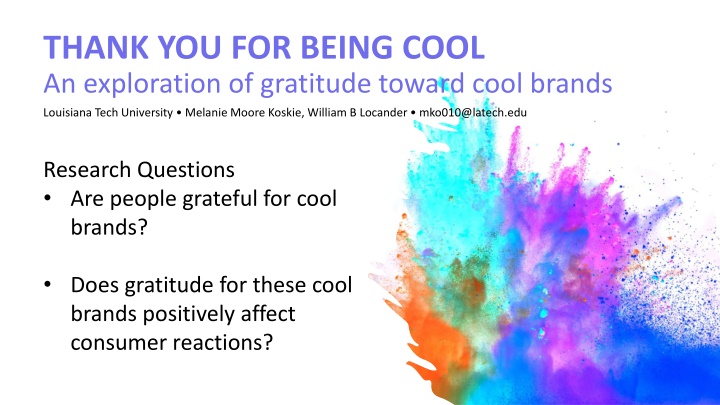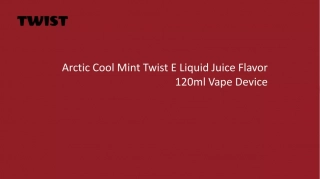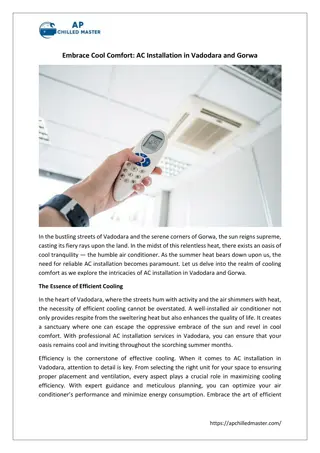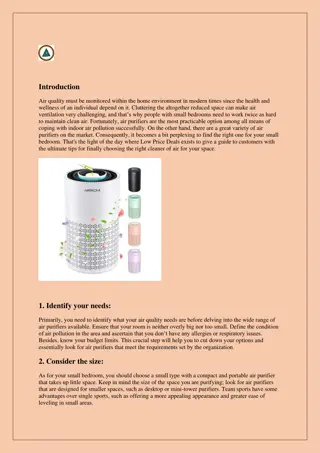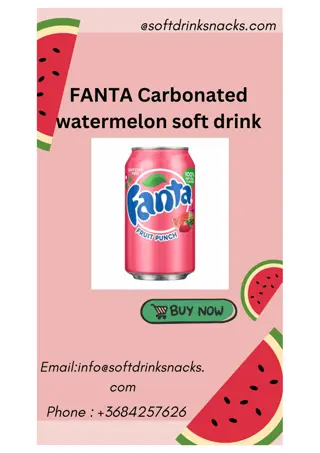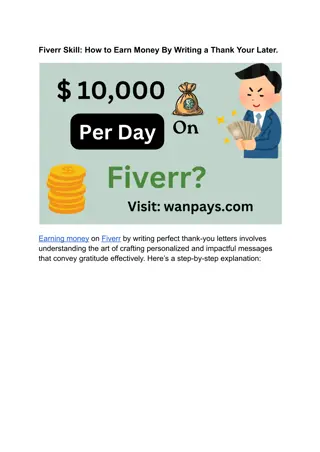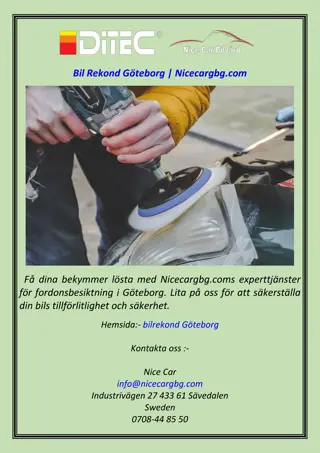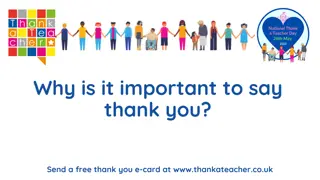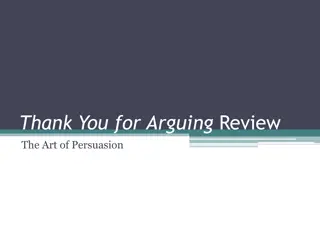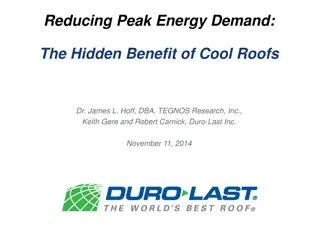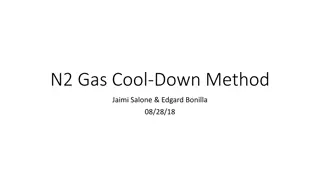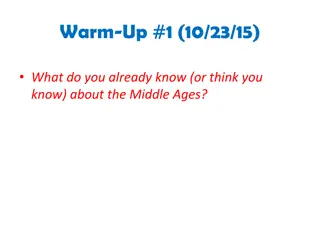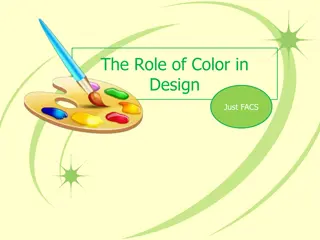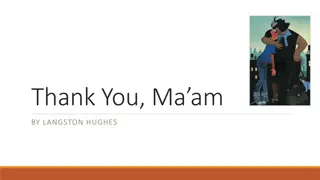THANK YOU FOR BEING COOL
This research explores how gratitude towards cool brands affects consumer reactions. It delves into the concept of coolness, brand gratitude, and their influence on positive consumer outcomes. The study involves surveying 350 consumers aged 18-40 to nominate cool brands and assess the relationship between brand coolness characteristics, gratitude, and word-of-mouth.
Download Presentation

Please find below an Image/Link to download the presentation.
The content on the website is provided AS IS for your information and personal use only. It may not be sold, licensed, or shared on other websites without obtaining consent from the author.If you encounter any issues during the download, it is possible that the publisher has removed the file from their server.
You are allowed to download the files provided on this website for personal or commercial use, subject to the condition that they are used lawfully. All files are the property of their respective owners.
The content on the website is provided AS IS for your information and personal use only. It may not be sold, licensed, or shared on other websites without obtaining consent from the author.
E N D
Presentation Transcript
THANK YOU FOR BEING COOL An exploration of gratitude toward cool brands Louisiana Tech University Melanie Moore Koskie, William B Locander mko010@latech.edu Research Questions Are people grateful for cool brands? Does gratitude for these cool brands positively affect consumer reactions?
What do we mean by cool? By gratitude? Coolness is a subjective and dynamic socially constructed positive trait attributed to cultural objects (like brands) inferred to be appropriately autonomous. (Warren and Campbell 2014) Characteristics of brand coolness (Warren et al., 2019) Original, Authentic, Rebellious, Subcultural, Energetic, Extraordinary, Aesthetically Appealing, High Status, Popular, and Iconic Brand gratitude is an appreciation and a sense of goodwill toward a brand that motivates the consumer to act in a way that benefits the brand. (adapted Fitzgerald, 1998) Essential elements of the emotion of gratitude (Roberts, 2004) Benefactor (cool brand), Beneficiary (consumer), Benefit (cool brand characteristic)
What we know Positive consumer outcomes are associated with both brand coolness (Warren et al. 2019) and gratitude (Palmatier et al. 2009) The indirect effect of gratitude on positive consumer outcomes has been demonstrated in a number of contexts: frontline employees (Bock, Folse, and Black, 2016), relationship marketing initiatives (Palmatier et al., 2009), loyalty programs (Steinhoff and Palmatier, 2016), CSR initiatives (Romani, Grappi, and Bagozzi, 2013), marketing communications (Bridger and Wood, 2017), B2B services (Pelser et al., 2015), sales (Oakley et al., 2021) etc.
What we expect Hypotheses: H1: Gratitude will indirectly affect the relationship between each brand coolness characteristic (BCC) and positive word of mouth (WOM). H2: Each BCC will be positively related to gratitude. H3: For each BCC, gratitude will be positively related to WOM. Gratitude Extraordinary Word of Mouth
Methodology Survey of 350 consumers ages 18-40 nominated a brand they think is cool. A CFA with all study variables demonstrated adequate fit: X2 = 1372.67, DF = 741, P < .001, CFI = .934, RMSEA = .05, SRMR = .04 * Authentic and original did not demonstrate discriminant validity. They are collapsed in the analysis and referred to as autonomy, in line with warren et al. 2019. Emotional Brand Attachment We tested and compared the two models in SPSS using PROCESS. (Romani, Grappi, Bagozzi 2013) Word of Mouth Extraordinary We assessed gratitude along with emotional brand attachment for each of the nine characteristics. Controls Gratitude Age Gender
What we know now H1: Gratitude will indirectly affect the relationship between each BCC and WOM. In each case it significantly added to the model with emotional brand attachment as a parallel mediator. The indirect effect of gratitude ranged from .03 for rebellious, to .17 for autonomy (original and authentic). H2: Each BCC will be positively related to gratitude. The direct effect of BCCs on gratitude ranged from .21 for rebellious, to .71 for autonomy. Medium effect sizes were also found for aesthetically appealing, .58, and extraordinary, .59. H3: For each BCC, gratitude will be positively related to WOM. The direct effect of gratitude on WOM ranged from .23 for extraordinary to .36 for rebellious, subcultural, and high status. In addition, the effect sizes for gratitude on WOM were over twice as large as those of emotional brand attachment on WOM.
What we still dont know What specific benefits do consumers perceive from the consumption of cool brands? What value is derived from the consumption of cool brands? How are these related to brand gratitude? What are the underlying psychological mechanisms responsible for creating gratitude for cool brands? What outcomes are strongest for gratitude and under what conditions can managers leverage cool brand gratitude to increase that behavior?
